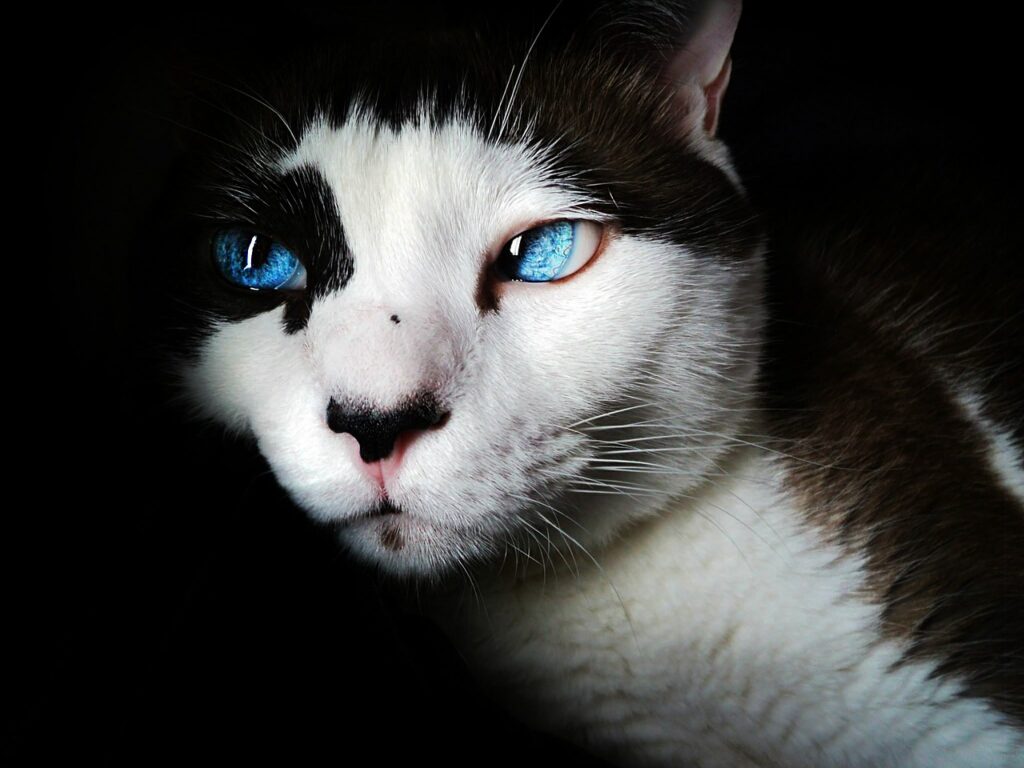Conjunctivitis is an inflammation or infection of the conjunctiva, the tissue lining the eyelids and attaching to the eyeball near the cornea. The conjunctiva can become irritated due to allergies induced by pollens, grasses, etc., or from infections caused by viruses, bacteria, or fungi. If the white portion of the eyeball (sclera) is also inflamed, this condition is occasionally referred to as ‘pink eye.’ Conjunctivitis is the most common ailment affecting the eye of the cat.
What are the symptoms of conjunctivitis in cats?
The symptoms of conjunctivitis vary depending on the cause. Typically, both allergies and infections cause a severe redness or ‘meaty’ appearance of the conjunctiva. This is caused by edema or fluid build-up and an increase in the size and number of blood vessels within the tissue. Either allergies or infections cause the eye to discharge or ‘weep.’
The consistency of the discharge often helps determine its cause. Usually infections caused by bacteria, fungi, etc., create a thick yellow or greenish eye discharge. The eyelids may actually stick together when held shut. This results from the accumulation of white blood cells or ‘pus’ excreted into the area in an effort to fight off the infection. Allergies, on the other hand, generally cause a clear or watery discharge. Regardless of the cause, a patient with conjunctivitis will often squint and/or keep the third eyelid partially covering the eyeball. Conjunctivitis is often painful, causing a cat to paw at or rub the eye against objects such as your leg or the carpet
What are the risks?
Normally, conjunctivitis is not life threatening, however, in advanced cases of infection, the organisms can spread and affect other structures of the eye. Vision could become impaired. In addition, infections or foreign bodies may cause corneal ulcers which are extremely serious conditions. Conjunctivitis may also be a symptom of a more serious disease such as feline immunodeficiency virus infection. As in humans, some infections can be transmitted to other individuals or litter mates. Allergies are not contagious and therefore pose no threat to other cats.
How to manage conjunctivitis in cats?
All cases of conjunctivitis should be treated at once. A cultureand sensitivity test may be necessary to determine if bacteria are the cause, and if so, what medication should be used for treatment. Scrapings of the conjunctiva can be made and examined to test for various viral infections.
Eye drops or ointments are usually the drugs of choice. Eye drops are watery solutions that must be applied every few hours, while ointments last longer and are usually only applied two to three times per day.
If the cause is suspected to be allergy, then various medications are available containing anti- inflammatories, usually hydrocortisones. If the cause is an infection, then bactericidal or fungicidal ointments or solutions may be applied. In severe cases, oral antibiotics are used in addition to the topical preparations. Most cases will respond to treatment, however, it may take one to two weeks to fully recover. In general, treatment is continued for several days after the eye regains its normal appearance.

